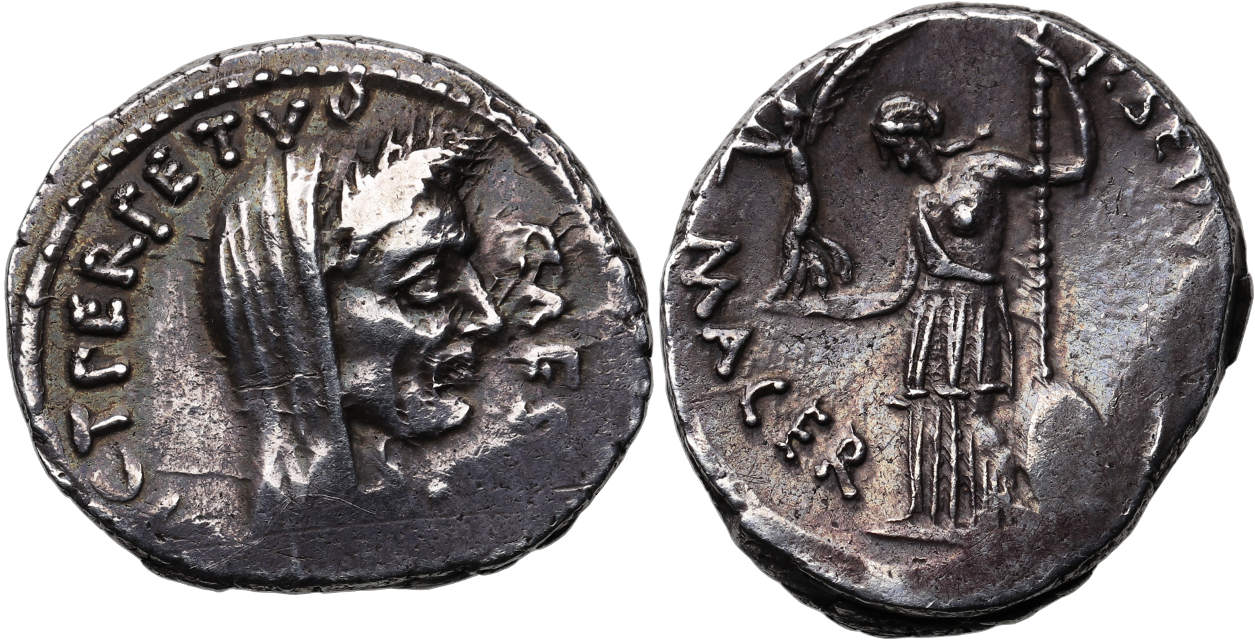Coins from the period of 44 A.D. featuring Julius Caesar are an interesting study because they were struck posthumously. Julius Caesar was assassinated in 44 B.C., and coins bearing his image continued to be minted during the time of the Roman Empire to honor his legacy. Here’s a detailed look at such coins:
Key Facts
- Date: While Julius Caesar died in 44 B.C., coins commemorating him were minted throughout the late Roman Republic and early Roman Empire, including the period around 44 A.D.
- Material: Typically silver (denarius), but also bronze and gold coins exist.
- Designer: Various moneyers (mint officials) and emperors who issued these coins, including Augustus and subsequent rulers.
- Mint Locations: Various mints across the Roman Empire, including Rome, Gaul, and other provinces.
Design Features
- Obverse (Front):
- Often features a portrait of Julius Caesar, depicted in a realistic style.
- Inscriptions usually include Caesar’s titles, such as “CAESAR” or “DIVUS JULIUS” (Divine Julius), reflecting his posthumous deification.
- Reverse (Back):
- Depicts various symbols of Roman authority and divinity, such as the lituus (augural staff), pontifical instruments, Venus (his supposed divine ancestor), or scenes of deification.
- Inscriptions and symbols on the reverse often celebrate Caesar’s achievements and deification.
Historical Context
- Posthumous Honor: Coins minted after Caesar’s assassination often highlighted his deification by the Senate and his role in the establishment of the Roman Empire.
- Propaganda: Emperors like Augustus used coins bearing Caesar’s image to legitimize their own rule, linking themselves to his legacy.
- Deification: The title “Divus Julius” and imagery associated with his deification (e.g., a comet, representing his soul ascending to the heavens) were common.
Notable Types
- Denarius of Augustus:
- Obverse: Bust of Julius Caesar.
- Reverse: Augustus, often depicted with symbols of power or divinity, sometimes with inscriptions celebrating the deification of Caesar.
- Aureus of Augustus:
- A gold coin featuring similar imagery to the denarius, but in gold, reflecting a higher denomination and value.
- Tetradrachms:
- Silver coins issued in the eastern provinces, featuring Caesar’s image and associated Roman and local symbols.
Collecting and Value
- Rarity: Coins featuring Julius Caesar, especially those minted close to his time, are highly valued by collectors.
- Condition: As with all ancient coins, the value is heavily influenced by the condition (grade), including factors like centering, strike quality, and wear.
- Authenticity: Due to the value and historical significance, forgeries exist. It is crucial to buy from reputable dealers and seek coins that have been authenticated and graded by experts.
Conclusion
Coins minted in honor of Julius Caesar around 44 A.D. are a fascinating glimpse into Roman history and the legacy of one of its most famous figures. These coins not only commemorate his life and achievements but also serve as tools of propaganda and legitimacy for subsequent rulers. Collectors value these coins for their historical significance, artistry, and the tangible connection they offer to the ancient world.
